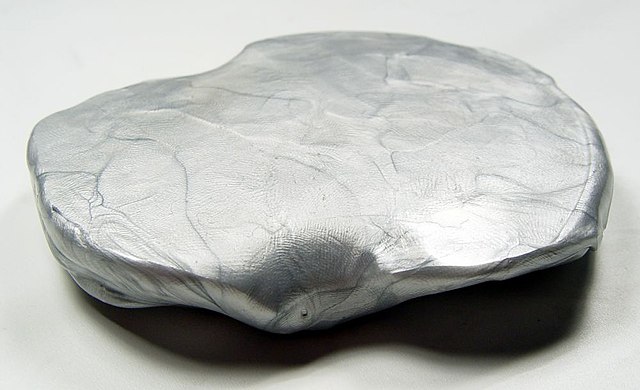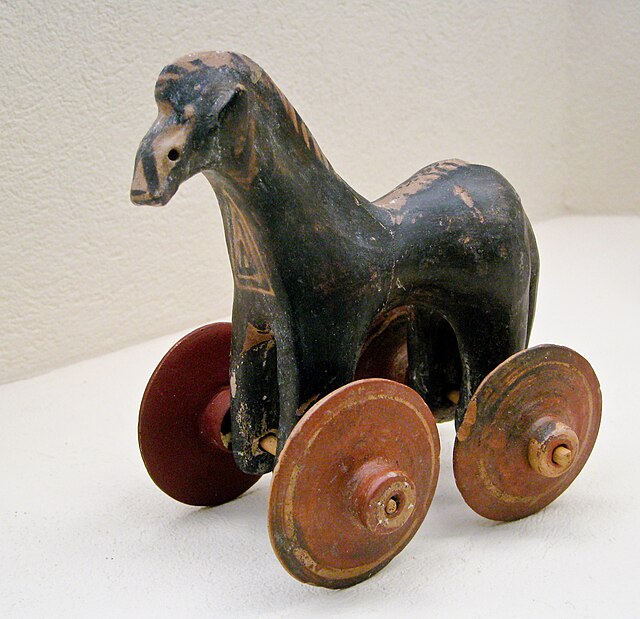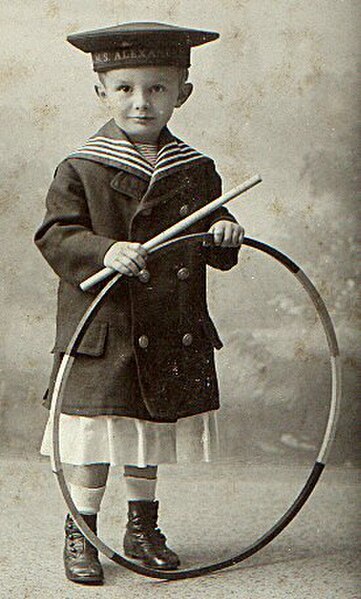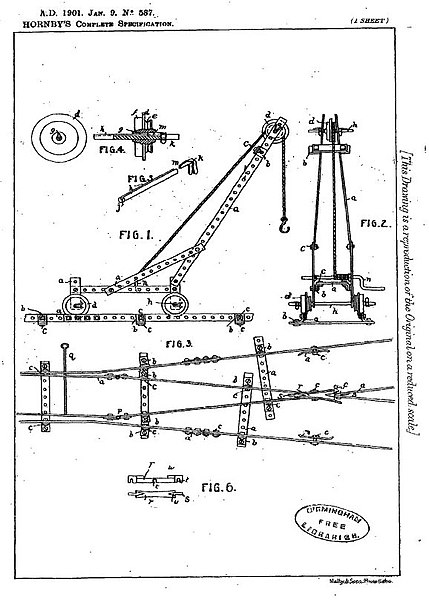Silly Putty is a toy containing silicone polymers that have unusual physical properties. It can flow like a liquid, bounce, stretch, or break depending on the amount of physical stress to which it is subjected. It contains viscoelastic liquid silicones, a type of non-Newtonian fluid, which makes it act as a viscous liquid over a long time period but as an elastic solid over a short time period. It was originally created during research into potential rubber substitutes for use by the United States in World War II.
Silver-colored Silly Putty
Silly Putty flowing through a hole
Silly Putty in the form of a solid cube
Magnetic thinking putty
A toy or plaything is an object that is used primarily to provide entertainment. Simple examples include toy blocks, board games, and dolls. Toys are often designed for use by children, although many are designed specifically for adults and pets. Toys can provide utilitarian benefits, including physical exercise, cultural awareness, or academic education. Additionally, utilitarian objects, especially those which are no longer needed for their original purpose, can be used as toys. Examples include children building a fort with empty cereal boxes and tissue paper spools, or a toddler playing with a broken TV remote control. The term "toy" can also be used to refer to utilitarian objects purchased for enjoyment rather than need, or for expensive necessities for which a large fraction of the cost represents its ability to provide enjoyment to the owner, such as luxury cars, high-end motorcycles, gaming computers, and flagship smartphones.
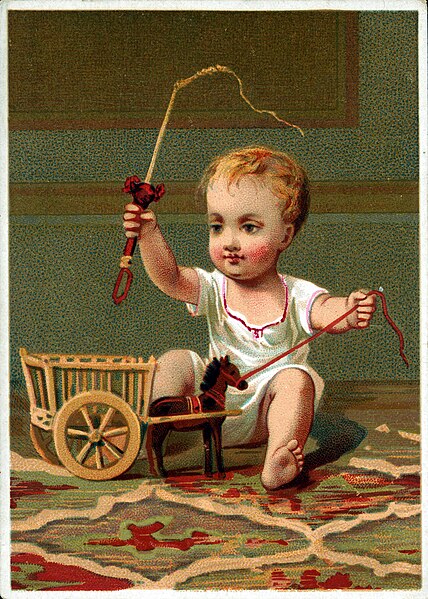
19th century illustration of a child playing with a toy horse and cart
Little horse on wheels, Ancient Greek children's toy. From a tomb dating 950–900 BCE, Kerameikos Archaeological Museum, Athens
A boy with a hoop. Hoops have long been a popular toy across a variety of cultures.
Frank Hornby's 1901 patent number GB190100587A for what later became known as Meccano

